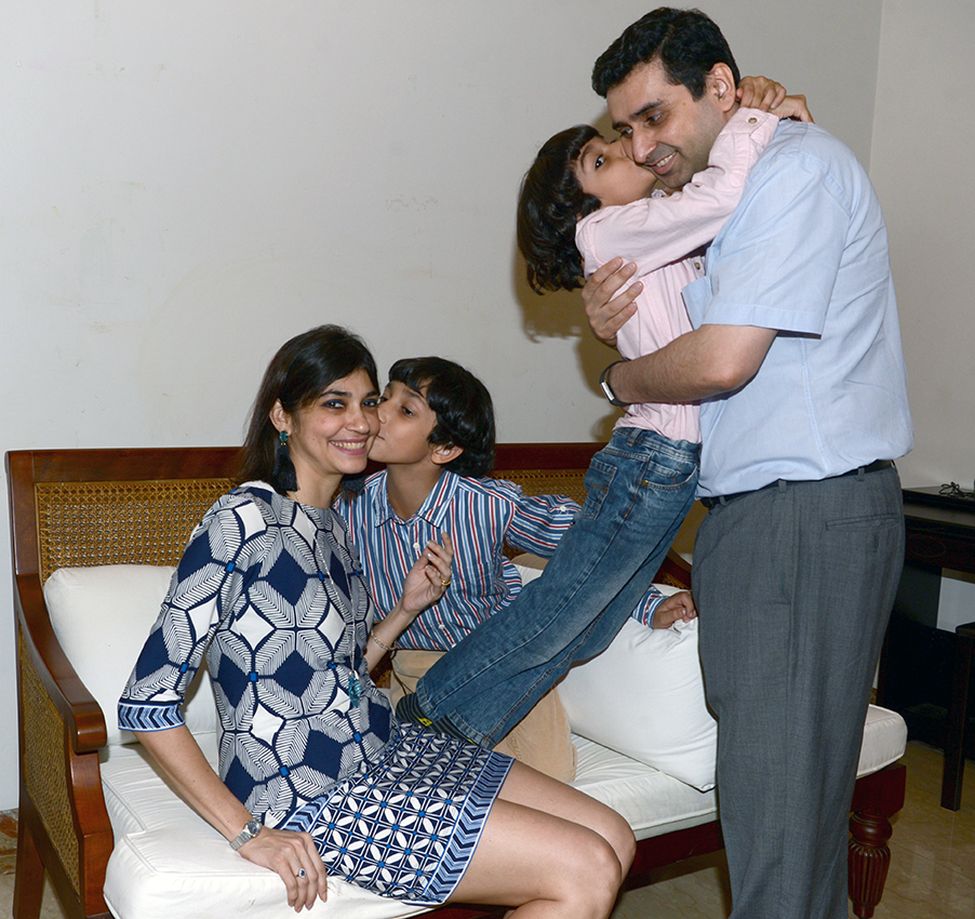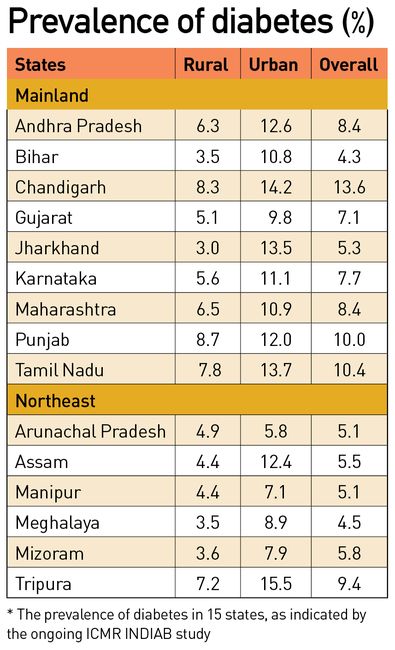Roshan Poncha, 43, has had an “almost lifelong innings” with diabetes.
A chartered accountant who was an accounting analyst with the World Bank in Chennai, Roshan was diagnosed with diabetes at the age of two. “I have no family history of diabetes,” she says. As a child, she had a hard time managing her sugar levels and studies. “I used to suffer from both hyperglycemic and hypoglycemic comas, though predominantly hypos, and I was occasionally hospitalised,” recalls Roshan. Yet, she would have just one insulin injection a day, balancing her food intake with the amount of insulin taken, on the advice of her doctor.
Roshan, however, was left in the lurch after her childhood doctor died. “Although doctors I met later advised me to take three short-acting insulin injections a day, I stayed with my single dose as I had quite successfully managed [the sugar levels] till I was 30,” she says.
After getting married to Cyrus Poncha, India's national squash coach, Roshan moved to Chennai, where she met Dr V. Mohan of Dr. Mohan's Diabetes Specialities Centre. He advised her to continue with the earlier dose and kept her under observation. Thereafter, when she decided to conceive, she switched to an insulin pump to manage her sugar levels better during pregnancy (one may have abnormal blood sugar levels while pregnant). However, she still had many hypoglycemic episodes during pregnancy. “I was so worried about my sugars spiking that I tended to take increased doses of insulin, which would sometimes lead to hypoglycaemia,” she says. “Once during my pregnancy, my sugar fell to 21 and I passed out on the bed. This happened because the pump that I used didn't track the blood sugar levels. So, I started testing my blood more often. But, I couldn't avoid hypoglycaemia at times, as I failed to regularly monitor my sugar levels.”
Despite the blood sugar swings, Roshan had two safe deliveries. A hands-on mother to her two boys now, Roshan doesn't let the condition hold her back. Having quit her job, she pursues her passions—stage acting and singing. But she lives under a constant fear that her sugar levels may go low, that too without symptoms.
Roshan hasn't had any of the complications associated with diabetes yet. But patients with an early onset of type 1 diabetes are found to have kidney, eye, heart, foot and other complications by the time they hit middle age. “Earlier considered the disease of the middle age or elderly group, diabetes has started affecting young adults and, more recently, adolescents and children,” says Mohan. “This can have serious consequences because the complications of diabetes can set in by early adulthood. If the youth and young adults start developing complications, it can potentially affect the economy of the country.”
According to the recent STEPS survey in Punjab, 18 per cent of all patients having diabetes are young adults (18 to 24 years) and 51 per cent belong to the age group of 25 years to 44 years. “The challenge is to give the right diagnosis, as in this group [18-24 years] type 1, type 2 and another form of diabetes called MODY [maturity onset diabetes of the young] are possible,” says Dr Vimal Pahuja, full-time consultant metabolic physician, Dr L.H. Hiranandani Hospital, Powai, Mumbai.
There are some disturbing trends as far as the changing epidemiology of diabetes is concerned, says Mohan. The disorder is now moving from the rich to the middle-income group and the poor strata of the society. "Second, it is moving from urban to rural areas, where medical facilities are often not adequate,” he says.
 Roshan Poncha (in pic, with her family), who was diagnosed with diabetes at the age of two | Vibi Job
Roshan Poncha (in pic, with her family), who was diagnosed with diabetes at the age of two | Vibi Job
According to the ongoing ICMR-INDIAB study, which aims at providing data on diabetes at the national and state levels, the prevalence of diabetes was higher among individuals of low socioeconomic status than those of higher socioeconomic status in urban areas of Chandigarh, Punjab, Andhra Pradesh, Tamil Nadu and Maharashtra in the mainland, and Tripura, Manipur and Assam in the northeast. However, studies done in rural areas show a different trend. In rural areas, in both the mainland and northeastern states, diabetes is found to be more prevalent among individuals in the higher socioeconomic status categories. “This suggests that the urban areas of more affluent states have transitioned further along the diabetes epidemic, such that less affluent individuals have a higher prevalence of diabetes than their more affluent counterparts. However, in rural areas throughout India, diabetes continues to be a disease of more affluent sections of society, suggesting that the epidemiological transition is less advanced in rural areas,” observes Mohan, who is the principal investigator of the study. “These results suggest that as the prosperity of states increases, the diabetes epidemic is likely to disproportionately affect the poorer sections of the society. This trend is a matter of great concern, warranting urgent preventive measures.”
Patients from the lower socioeconomic strata often end up discontinuing treatment, owing to lack of awareness and inability to afford medication, says Dr Ravi Sankar Erukulapati, senior consultant, endocrinology, Apollo Hospitals, Hyderabad. “There are many medications available to treat diabetes. Newer medicines like GLP-1 analogues, DPPL inhibitors and SGLT2 inhibitors along with newer analogue insulins launched in the market recently have many advantages over the conventional medications—less weight gain or even weight loss, lower risk of hypoglycaemia and flexibility of usage.”

But most of these newer medicines are expensive and beyond the reach of common man, says Sankar. “When a single diabetes medication itself costs Rs6,000-Rs7,000 per month, affordability is certainly a big constraint in the Indian context,” he says.
Sankar says lack of physical activity is a major factor that has contributed to the diabetic epidemic. N.S. Chandrasekhar from Hyderabad had to pay a huge price for 'being immobile'. Chandrasekhar, 67, who worked as a system integration engineer in the Aryabhata satellite programme and later with the Tejas aircraft design programme, was obsessed with his career. “I used to work round-the-clock, and hardly had time to eat, let alone exercise,” he says.
Though his hard work paid off—he worked with Dr A.P.J. Abdul Kalam and won the National Innovation Award from the Union government in 1977—the long hours took a toll on his health. He was diagnosed with diabetes at 47. “I felt there was something wrong with me. I went for a checkup and found my sugar level was 600,” he says. He was asked to eat healthy and get enough sleep, but couldn't. “It is so hard to change your routine,” he says. So, he quit his job at 50, and now his diabetes is under control.
Diabetes, as in Chandrasekhar's case, could be your body's SOS call—a reminder to slow down and reclaim your life. Better heed it!
Bitter truth
Indians are developing diabetes at a younger age—around 45 years. Eighty-five per cent of diabetics have type 2 diabetes; only 30 per cent have well-controlled sugar levels. The prevalence of diabetes is more in south India as compared to northern states.
We have a higher incidence of micro- and macro-vascular complications, owing to doctor inertia, late diagnosis, poor control, wrong diet and lack of exercise. A typical Indian diabetic is a thin-fat diabetic—thin overall, but more centrally obese. Most Indian diabetics have low HDL (high-density lipoprotein) and high triglyceride levels.
Dr Anil Ballani, consultant, internal medicine at Hinduja Healthcare Surgical, Khar, Mumbai








